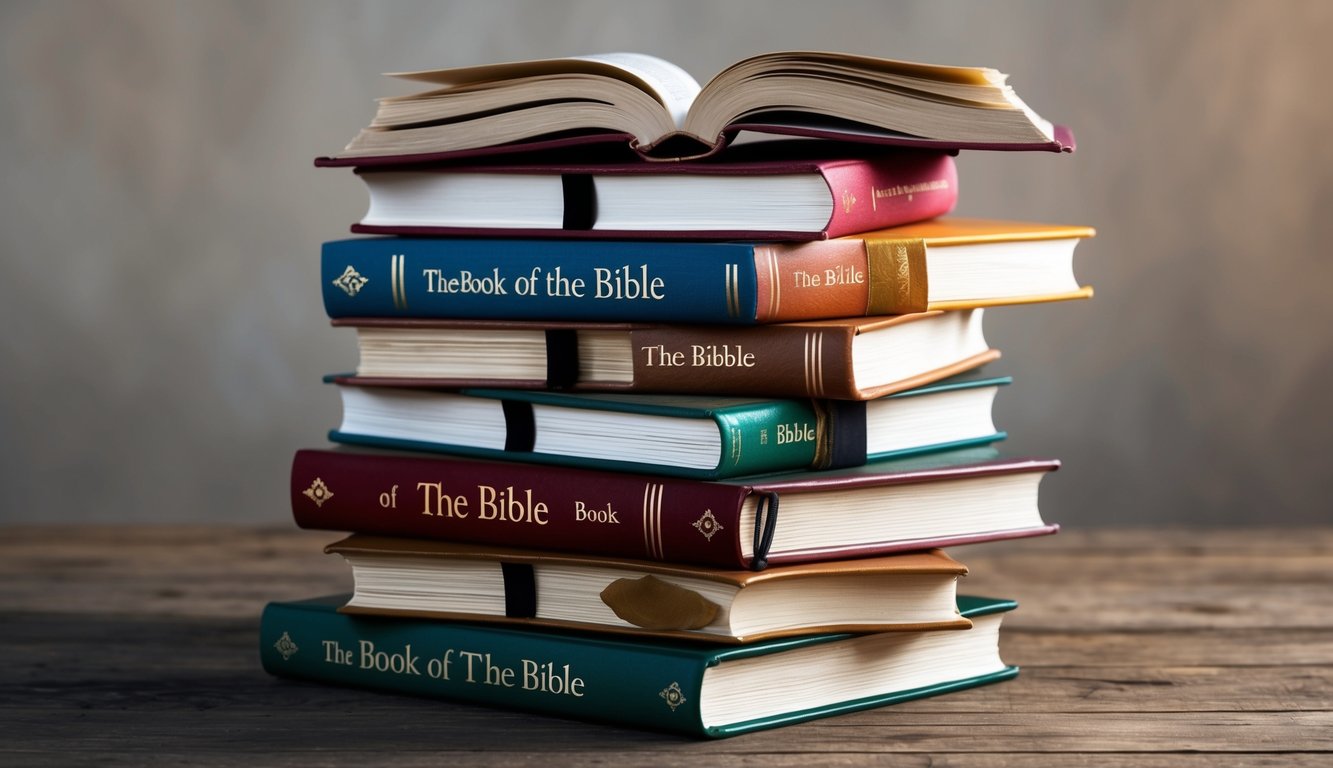Don’t Miss Out On This Unique Astrological Opportunity
Are you tired of spinning your wheels and getting nowhere? Simply put, you’re out of sync: you’re out of alignment with your astral configuration.
But: there’s a kind of map that can help you reclaim your alignment. Think of it as your own personal blueprint to success and happiness: a blueprint that will help you live your most amazing life.
Get started here.
Are you curious about how the Bible’s stories actually unfold in time? Considering the Bible in chronological order can provide a fresh perspective.
When you approach the Bible in this sequence, you can follow the historical journey from creation through the life of Jesus and the early Church.
Discovering which book was written first or in what context can help deepen your appreciation and understanding of these sacred texts.
Each book in both the Old and New Testaments holds a unique place in history and offers valuable insights into the past.
Whether you’re new to the Bible or seeking to explore it differently, reading it chronologically can enrich your study and connect the dots in compelling ways.
Key Takeaways
- The Bible can be approached in chronological order for historical understanding.
- Reading this way allows you to follow the timeline from creation to Jesus.
- Each book offers unique insights, deepening your appreciation of the texts.
The Beginning and the Patriarchs
In the Bible, the early chapters introduce you to God’s creation and his promises to key figures known as the patriarchs.
These stories set the stage for the relationship between God and his people.
Creation and Covenant
The book of Genesis starts with the creation of the world.
God creates everything in six days and rests on the seventh day.
You’ll see how God forms the Earth, sky, seas, and every living thing, including humans, with Adam and Eve being the first two people.
After the flood, God establishes a covenant with Noah.
He promises never to destroy the Earth with water again.
This part of Genesis shows the beginning of God’s promises and his plan for humanity.
It highlights how humans are meant to live in harmony with God’s creation.
Genesis also includes stories of early figures like Abel, Enoch, and Noah.
Each has a unique relationship with God, showing different aspects of faith and obedience.
The Patriarchs
Genesis introduces you to the patriarchs, starting with Abraham.
God calls Abraham to leave his homeland and promises to make him a great nation.
You’ll read about his journey and the covenant God makes with him, including the promise of land and descendants as numerous as the stars.
Abraham’s son Isaac and grandson Jacob continue this story.
Jacob, later named Israel, has twelve sons who become the leaders of the twelve tribes of Israel.
These chapters follow their lives, decisions, and how God interacts with them.
The experiences of these patriarchs shape the foundation of the Israelite nation.
These stories highlight faith, promises, and challenges they faced in moving toward the fulfillment of God’s promises.
The Kingdom of Israel and Wisdom Literature

In this part, you’ll explore the rise of the Kingdom of Israel and its influential works of wisdom literature.
You’ll meet key figures, learn about important books, and gain insight into ancient wisdom and poetry.
Formation of the Kingdom
The Kingdom of Israel began with leaders like Joshua and Judges. Joshua led the Israelites into the promised land, while the Judges provided leadership afterward.
Later, the people desired a king to unite them, leading to Saul being appointed as the first king in 1 Samuel.
After Saul, @David became king.
He expanded the kingdom and established Jerusalem as its capital.
David was succeeded by his son, Solomon, who is known for his wisdom and building projects, including the temple in Jerusalem.
This period is detailed in 2 Samuel and 1 Kings.
It’s an era of growth, challenges, and pivotal moments.
Wisdom and Poetry
Wisdom literature flourished during the reigns of David and Solomon.
The Psalms, a collection of poems, songs, and prayers, reflect David’s experiences and heart.
Solomon is traditionally associated with Proverbs, Ecclesiastes, and the Song of Solomon.
These books offer practical advice, explore life’s meaning, and express love and beauty.
Proverbs gives insights into moral and ethical living, Ecclesiastes ponders life’s purpose, and the Song of Solomon celebrates love.
Sometimes, the Book of Wisdom, though not in all traditions, is considered part of this literature.
Through these works, you gain timeless insights and a peek into ancient life.
Exile and Return
During the Exile and Return period, prophets warned the people of Israel about the consequences of straying from their faith.
The exile led to deep reflection and eventual restoration as the people returned to their homeland, reestablishing their connection with the divine.
Prophetic Warnings
Prior to the exile, the prophets warned the Israelites of impending consequences due to their disobedience and idolatry. Jeremiah and Isaiah were prominent figures who communicated these warnings.
Jeremiah, known for his heartfelt messages, warned about the destruction of Jerusalem.
Isaiah spoke of the need to turn back to God to avoid this fate.
These warnings were accompanied by messages of hope.
For instance, Isaiah prophesied a future when restoration would come and the Lord would deliver his people. Ezekiel and Daniel, who lived during the exile, continued to offer hope with visions of future redemption and return to the land.
Exile and Restoration
After the Babylonians conquered Judah, many Israelites faced exile.
The books of 2 Chronicles and Lamentations describe the impact of this upheaval.
Yet, during this time, there were plans for Israel’s eventual return.
The books of Ezra and Nehemiah highlight the restoration process.
Under leaders like Ezra, Jewish exiles returned and began rebuilding.
The walls of Jerusalem were restored, and worship practices were revived.
Prophets like Haggai and Zechariah encouraged the people to rebuild the temple.
The story of Esther showcases the resilience of the Jews amidst adversity in foreign lands.
Through these experiences, the Israelites renewed their commitment and faith in the Lord.
The Life of Jesus and the Early Church

You can explore the events of Jesus’ life and the growth of the early church through the New Testament.
The Gospels tell you about Jesus’s life, while Acts and the Epistles guide you through the early church and teachings to believers.
The Gospels
In the Gospels of Matthew, Mark, Luke, and John, you discover the story of Jesus Christ.
Each Gospel gives you a unique perspective on Jesus’s life. Matthew and Luke provide details about Jesus’s birth, like the visit from the Magi and the journey to Egypt. John offers insight into Jesus’s divine nature.
You read about Jesus’s teachings, miracles, and parables.
The Gospels highlight his ministry and crucial moments like his death and resurrection.
The Acts and the Epistles
Acts shows you how the Apostles spread the message of Jesus after his resurrection.
It follows their travels and the challenges they faced.
You’ll see how the church expanded, especially through the journeys of Paul and Peter.
The Epistles, like Romans, 1 Corinthians, and others, are letters.
They address issues and give advice to early believers.
Paul wrote many of these, guiding churches and individuals through theology and practical living.
Works like James and Hebrews also appear, emphasizing faith in action and the priestly role of Jesus.
These writings are foundational to understanding early Christian belief and community development.
Frequently Asked Questions

When you’re looking to read the Bible in chronological order, there are some common questions people have.
This can help you understand the Bible’s historical timeline and provide resources for a year-long reading plan.
What is the best way to read the Bible in chronological order?
You can follow specific reading plans that list the books in the order of events.
This can offer a fresh perspective on the Bible’s narrative.
This approach helps you understand the historical context and progression of biblical events more clearly.
If you’ve ever wondered how many books in the Bible there are, the answer depends on the tradition—66 in the Protestant Bible, while Catholic and Orthodox Bibles include additional books.
Exploring different reading plans can deepen your comprehension and appreciation of the Bible’s structure and message.
Can I find a chart that shows the Bible books in their historical timeline?
Yes, charts are available online that display the books according to when events happened.
These can serve as a helpful guide.
How does reading the Bible in chronological order change my understanding of it?
By reading the Bible chronologically, you may gain a better grasp of historical context and see connections between events more clearly.
Is there a difference between the chronological order of the Bible and the order in which the books appear?
Yes, the traditional order in the Bible is by genre, not chronological.
Reading it in event order changes the sequence you follow.
What resources are available for reading the Bible in chronological order over the course of a year?
Many resources, including apps and printed guides, provide daily readings.
These can help you complete the Bible in one year.
How are the books in the Bible ordered chronologically and by authorship?
Chronological order focuses on historical sequence.
Meanwhile, authorship order considers when each book was written.
Both provide unique insights into the text.



